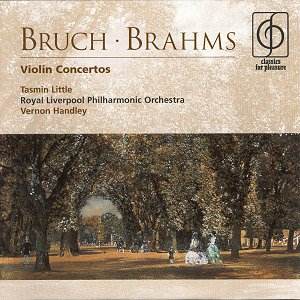 Ravi Shankar – Full Circle: Two Ragas
Ravi Shankar – Full Circle: Two Ragas
Performers: Ravi Shankar – Sitar, Anoushka Shankar – Sitar, Bikram Gosh – Tabla, Tanmoy Bose – Tabla, Ajay Sharma – Tanpura, Barry Phillips – Tanpura.
Works: Ragas Kaushi Kanharra and Mishra Gara.
Recorded live at Carnegie Hall, New York, 6 October 2000.
Label: EMI CDC5 57106-2 [54:51]
In the pantheon of global music, few figures stand as prominently as Ravi Shankar, whose remarkable legacy has been shaped by a profound understanding and interpretation of Indian classical music. His latest offering, “Full Circle,” captures a live performance at Carnegie Hall, featuring his daughter, Anoushka Shankar, alongside an ensemble of distinguished musicians. This recording not only reaffirms Shankar’s position as a master sitarist but also illuminates the evolving dialogue between tradition and innovation within the Indian classical music tradition.
The recording features two ragas: Kaushi Kanharra and Mishra Gara. Each raga, lasting approximately half an hour, allows for an expansive exploration of melodic and rhythmic improvisation—a hallmark of Indian classical music. The modern recording technique employed here creates a balanced soundscape that grants listeners a sense of immersion in the concert hall atmosphere. This stands in contrast to Shankar’s earlier works, which often employed a more direct, “in your face” sonic approach. The more spacious acoustic of “Full Circle” enhances the listener’s experience, allowing the intricate interplay between the sitars and tabla to unfold with clarity and depth.
Kaushi Kanharra opens with a contemplative mood, characterized by Shankar’s delicate phrasing. The sitar’s timbre resonates with a warmth that invites the audience into a meditative state. Anoushka’s responses are particularly noteworthy; her phrasing displays both reverence and confidence, suggesting a deep engagement with the raga’s emotional landscape. The invocation of karmasu kausalam from the Bhagavad Gita, as noted in the sleeve notes, resonates throughout the performance. This philosophical underpinning underscores Shankar’s approach—an emphasis on inner focus and artistic integrity that transcends mere technical prowess.
As the performance progresses, the dynamics shift, culminating in the exhilarating peaks of Mishra Gara. Here, the rhythmic interplay between the tabla players, Bikram Gosh and Tanmoy Bose, adds a vibrant pulse that propels the music forward. Their deft command of intricate rhythmic patterns complements the sitar dialogues, creating a tapestry of sound that draws the audience into a shared experience of ecstatic musicality. The climactic moments are marked by Shankar’s soaring melodic lines, which evoke a sense of both joy and transcendence. The effectiveness of this interaction between the performers speaks volumes about their collective mastery and the deep-rooted tradition they represent.
Comparatively, while Shankar’s earlier recordings—such as “Three Ragas” (1962)—exhibit similar improvisatory spirit and emotional depth, “Full Circle” benefits from greater technical refinement and a more mature interpretative lens. In the former, we observe a raw intensity that is equally compelling, yet the modernity of this recording allows for a nuanced dialogue that is emblematic of the current state of Indian classical music.
The engineering of this recording warrants particular mention. The clarity and spaciousness of the sound capture the subtleties of both the sitar and tabla, while the audience’s appreciative reactions serve to enrich the listening experience without overwhelming it. The balance achieved here reflects a thoughtful consideration of the acoustic environment, allowing the musicians’ artistry to shine through.
In a broader historical context, “Full Circle” represents not just a continuation of Shankar’s illustrious career but also a pivotal moment in the transmission of Indian classical music to global audiences. The participation of Anoushka, who has emerged as a formidable musician in her own right, symbolizes the generational continuity of this art form. Her contributions signal a promising future while honoring the profound legacies of her father and their collective cultural heritage.
In conclusion, “Full Circle” is a testament to the enduring power of improvisation within the Indian classical tradition. Through the intimate interplay between Ravi and Anoushka Shankar, supported by a skilled ensemble, this recording invites listeners to explore the depths of musical expression that arise from a profound engagement with both technique and spirituality. As we navigate the intricate landscapes of Kaushi Kanharra and Mishra Gara, we are reminded of the transformative potential of music—a potential that Ravi Shankar has championed throughout his remarkable career.



